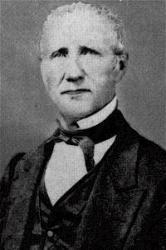Planning worship?
Check out our sister site, ZeteoSearch.org,
for 20+ additional resources related to your search.
- |
User Links
Person Results
Anonymous
Person Name: Anon. Author of "What Wondrous Love Is This" in Glory and Praise (3rd. ed.) In some hymnals, the editors noted that a hymn's author is unknown to them, and so this artificial "person" entry is used to reflect that fact. Obviously, the hymns attributed to "Author Unknown" "Unknown" or "Anonymous" could have been written by many people over a span of many centuries.
Anonymous
Richard Proulx
1937 - 2010 Person Name: Richard Proulx, 1937-2010 Harmonizer of "WONDROUS LOVE" in Worship (4th ed.) Richard Proulx (b. St. Paul, MN, April 3, 1937; d. Chicago, IL, February 18, 2010). A composer, conductor, and teacher, Proulx was director of music at the Holy Name Cathedral in Chicago, Illinois (1980-1997); before that he was organist and choirmaster at St. Thomas' Episcopal Church in Seattle, Washington. He contributed his expertise to the Roman Catholic Worship III (1986), The Episcopal Hymnal 1982, The United Methodist Hymnal (1989), and the ecumenical A New Hymnal for Colleges and Schools (1992). He was educated at the University of Minnesota, MacPhail College of Music in Minneapolis, Minnesota, St. John's Abbey in Collegeville, Minnesota, and the Royal School of Church Music in England. He composed more than 250 works.
Bert Polman
Richard Proulx
John Newton

1725 - 1807 Person Name: John Newton, 1725-1807 Author of "What Wondrous Love Is This" in Hymns of the Saints John Newton (b. London, England, 1725; d. London, 1807) was born into a Christian home, but his godly mother died when he was seven, and he joined his father at sea when he was eleven. His licentious and tumultuous sailing life included a flogging for attempted desertion from the Royal Navy and captivity by a slave trader in West Africa. After his escape he himself became the captain of a slave ship. Several factors contributed to Newton's conversion: a near-drowning in 1748, the piety of his friend Mary Catlett, (whom he married in 1750), and his reading of Thomas à Kempis' Imitation of Christ. In 1754 he gave up the slave trade and, in association with William Wilberforce, eventually became an ardent abolitionist. After becoming a tide-surveyor in Liverpool, England, Newton came under the influence of George Whitefield and John and Charles Wesley and began to study for the ministry. He was ordained in the Church of England and served in Olney (1764-1780) and St. Mary Woolnoth, London (1780-1807). His legacy to the Christian church includes his hymns as well as his collaboration with William Cowper (PHH 434) in publishing Olney Hymns (1779), to which Newton contributed 280 hymns, including “Amazing Grace.”
Bert Polman
==================
Newton, John, who was born in London, July 24, 1725, and died there Dec. 21, 1807, occupied an unique position among the founders of the Evangelical School, due as much to the romance of his young life and the striking history of his conversion, as to his force of character. His mother, a pious Dissenter, stored his childish mind with Scripture, but died when he was seven years old. At the age of eleven, after two years' schooling, during which he learned the rudiments of Latin, he went to sea with his father. His life at sea teems with wonderful escapes, vivid dreams, and sailor recklessness. He grew into an abandoned and godless sailor. The religious fits of his boyhood changed into settled infidelity, through the study of Shaftesbury and the instruction of one of his comrades. Disappointing repeatedly the plans of his father, he was flogged as a deserter from the navy, and for fifteen months lived, half-starved and ill-treated, in abject degradation under a slave-dealer in Africa. The one restraining influence of his life was his faithful love for his future wife, Mary Catlett, formed when he was seventeen, and she only in her fourteenth year. A chance reading of Thomas à Kempis sowed the seed of his conversion; which quickened under the awful contemplations of a night spent in steering a water-logged vessel in the face of apparent death (1748). He was then twenty-three. The six following years, during which he commanded a slave ship, matured his Christian belief. Nine years more, spent chiefly at Liverpool, in intercourse with Whitefield, Wesley, and Nonconformists, in the study of Hebrew and Greek, in exercises of devotion and occasional preaching among the Dissenters, elapsed before his ordination to the curacy of Olney, Bucks (1764).
The Olney period was the most fruitful of his life. His zeal in pastoral visiting, preaching and prayer-meetings was unwearied. He formed his lifelong friendship with Cowper, and became the spiritual father of Scott the commentator. At Olney his best works—-Omicron's Letters (1774); Olney Hymns (1779); Cardiphonia, written from Olney, though published 1781—were composed. As rector of St. Mary Woolnoth, London, in the centre of the Evangelical movement (1780-1807) his zeal was as ardent as before. In 1805, when no longer able to read his text, his reply when pressed to discontinue preaching, was, "What, shall the old African blasphemer stop while he can speak!" The story of his sins and his conversion, published by himself, and the subject of lifelong allusion, was the base of his influence; but it would have been little but for the vigour of his mind (shown even in Africa by his reading Euclid drawing its figures on the sand), his warm heart, candour, tolerance, and piety. These qualities gained him the friendship of Hannah More, Cecil, Wilberforce, and others; and his renown as a guide in experimental religion made him the centre of a host of inquirers, with whom he maintained patient, loving, and generally judicious correspondence, of which a monument remains in the often beautiful letters of Cardiphonia. As a hymnwriter, Montgomery says that he was distanced by Cowper. But Lord Selborne's contrast of the "manliness" of Newton and the "tenderness" of Cowper is far juster. A comparison of the hymns of both in The Book of Praise will show no great inequality between them. Amid much that is bald, tame, and matter-of-fact, his rich acquaintance with Scripture, knowledge of the heart, directness and force, and a certain sailor imagination, tell strongly. The one splendid hymn of praise, "Glorious things of thee are spoken," in the Olney collection, is his. "One there is above all others" has a depth of realizing love, sustained excellence of expression, and ease of development. "How sweet the name of Jesus sounds" is in Scriptural richness superior, and in structure, cadence, and almost tenderness, equal to Cowper's "Oh! for a closer walk with God." The most characteristic hymns are those which depict in the language of intense humiliation his mourning for the abiding sins of his regenerate life, and the sense of the withdrawal of God's face, coincident with the never-failing conviction of acceptance in The Beloved. The feeling may be seen in the speeches, writings, and diaries of his whole life. [Rev. H. Leigh Bennett, M.A.]
A large number of Newton's hymns have some personal history connected with them, or were associated with circumstances of importance. These are annotated under their respective first lines. Of the rest, the known history of which is confined to the fact that they appeared in the Olney Hymns, 1779, the following are in common use:—
1. Be still, my heart, these anxious cares. Conflict.
2. Begone, unbelief, my Saviour is near. Trust.
3. By the poor widow's oil and meal. Providence.
4. Chief Shepherd of Thy chosen sheep. On behalf of Ministers.
5. Darkness overspreads us here. Hope.
6. Does the Gospel-word proclaim. Rest in Christ.
7. Fix my heart and eyes on Thine. True Happiness.
8. From Egypt lately freed. The Pilgrim's Song.
9. He Who on earth as man was Known. Christ the Rock.
10. How blest are they to whom the Lord. Gospel Privileges.
11. How blest the righteous are. Death of the Righteous.
12. How lost was my [our] condition. Christ the Physician.
13. How tedious and tasteless the hours. Fellowship with Christ.
14. How welcome to the saints [soul] when pressed. Sunday.
15. Hungry, and faint, and poor. Before Sermon.
16. In mercy, not in wrath, rebuke. Pleading for Mercy.
17. In themselves, as weak as worms. Power of Prayer.
18. Incarnate God, the soul that knows. The Believer's Safety.
19. Jesus, Who bought us with His blood. The God of Israel. "Teach us, 0 Lord, aright to plead," is from this hymn.
20. Joy is a [the] fruit that will not grow. Joy.
21. Let hearts and tongues unite. Close of the Year. From this "Now, through another year," is taken.
22. Let us adore the grace that seeks. New Year.
23. Mary to her [the] Saviour's tomb. Easter.
24. Mercy, 0 Thou Son of David. Blind Bartimeus.
25. My harp untun'd and laid aside. Hoping for a Revival. From this "While I to grief my soul gave way" is taken.
26. Nay, I cannot let thee go. Prayer. Sometimes, "Lord, I cannot let Thee go."
27. Now may He Who from the dead. After Sermon.
28. 0 happy they who know the Lord, With whom He deigns to dwell. Gospel Privilege.
29. O Lord, how vile am I. Lent.
30. On man in His own Image made. Adam.
31. 0 speak that gracious word again. Peace through Pardon.
32. Our Lord, Who knows full well. The Importunate Widow. Sometimes altered to "Jesus, Who knows full well," and again, "The Lord, Who truly knows."
33. Physician of my sin-sick soul. Lent.
34. Pleasing spring again is here. Spring.
35. Poor, weak, and worthless, though I am. Jesus the Friend.
36. Prepare a thankful song. Praise to Jesus.
37. Refreshed by the bread and wine. Holy Communion. Sometimes given as "Refreshed by sacred bread and wine."
38. Rejoice, believer, in the Lord. Sometimes “Let us rejoice in Christ the Lord." Perseverance.
39. Salvation, what a glorious plan. Salvation.
40. Saviour, shine and cheer my soul. Trust in Jesus. The cento "Once I thought my mountain strong," is from this hymn.
41. Saviour, visit Thy plantation. Prayer for the Church.
42. See another year [week] is gone. Uncertainty of Life.
43. See the corn again in ear. Harvest.
44. Sinner, art thou still secure? Preparation for the Future.
45. Sinners, hear the [thy] Saviour's call. Invitation.
46. Sovereign grace has power alone. The two Malefactors.
47. Stop, poor sinner, stop and think. Caution and Alarm.
48. Sweeter sounds than music knows. Christmas.
49. Sweet was the time when first I felt. Joy in Believing.
50. Ten thousand talents once I owed. Forgiveness and Peace.
51. The grass and flowers, which clothe the field. Hay-time.
52. The peace which God alone reveals. Close of Service.
53. Thy promise, Lord, and Thy command. Before Sermon.
54. Time, by moments, steals away. The New Year.
55. To Thee our wants are known. Close of Divine Service.
56. We seek a rest beyond the skies. Heaven anticipated.
57. When any turn from Zion's way. Jesus only.
58. When Israel, by divine command. God, the Guide and Sustainer of Life.
59. With Israel's God who can compare? After Sermon.
60. Yes, since God Himself has said it. Confidence.
61. Zion, the city of our God. Journeying Zionward.
-- John Julian, Dictionary of Hymnology (1907)
=================
Newton, J., p. 803, i. Another hymn in common use from the Olney Hymns, 1779, is "Let me dwell on Golgotha" (Holy Communion).
--John Julian, Dictionary of Hymnology, Appendix, Part II (1907)
-----
John Newton was born in London, July 24, 1725. His mother died when he was seven years old. In his eleventh year he accompanied his father, a sea captain, on a voyage. For several years his life was one of dissipation and crime. He was disgraced while in the navy. Afterwards he engaged in the slave trade. Returning to England in 1748, the vessel was nearly wrecked in a storm. This peril forced solemn reflection upon him, and from that time he was a changed man. It was six years, however, before he relinquished the slave trade, which was not then regarded as an unlawful occupation. But in 1754, he gave up sea-faring life, and holding some favourable civil position, began also religious work. In 1764, in his thirty-ninth year, he entered upon a regular ministry as the Curate of Olney. In this position he had intimate intercourse with Cowper, and with him produced the "Olney Hymns." In 1779, Newton became Rector of S. Mary Woolnoth, in London, in which position he became more widely known. It was here he died, Dec. 21, 1807, His published works are quite numerous, consisting of sermons, letters, devotional aids, and hymns. He calls his hymns "The fruit and expression of his own experience."
--Annotations of the Hymnal, Charles Hutchins, M.A. 1872
See also in:
Hymn Writers of the Church
=======================
John Newton
Marty Haugen
b. 1950 Person Name: Marty Haugen, b. 1950 Author (st. 2-) of "Triduum Hymn: Wondrous Love" in Gather Comprehensive Marty Haugen (b. 1950), is a prolific liturgical composer with many songs included in hymnals across the liturgical spectrum of North American hymnals and beyond, with many songs translated into different languages. He was raised in the American Lutheran Church, received a BA in psychology from Luther College, yet found his first position as a church musician in a Roman Catholic parish at a time when the Roman Catholic Church was undergoing profound liturgical and musical changes after Vatican II. Finding a vocation in that parish to provide accessible songs for worship, he continued to compose and to study, receiving an MA in pastoral studies at the University of St. Thomas in St. Paul Minnesota. A number of liturgical settings were prepared for the Evangelical Lutheran Church in America and more than 400 of his compositions are available from several publishers, especially GIA Publications, who also produced some 30 recordings of his songs. He is composer-in-residence at Mayflower Community Congregational Church in Minneapolis and continues to compose and travel to speak and teach at worship events around the world.
Emily Brink
Marty Haugen
Russell Kelso Carter

1849 - 1928 Person Name: R. K. C. Alterer of "What Wondrous Love Is This" in Precious Hymns Russel Kelso Carter was a professor in the Pennsylvania Military College of Chester. While there he was licensed to preach by the Methodist Episcopal Church. He became very active in leading camp meetings and revivals. After failing health forced him to abandon this work, he studied and became a medical doctor as well as a writer. He wrote novels as well as hymns.
Dianne Shapiro, from "The Singers and Their Songs: sketches of living gospel hymn writers" by Charles Hutchinson Gabriel (Chicago: The Rodeheaver Company, 1916)
Russell Kelso Carter
R. H. Cornelius

1872 - 1933 Arranger of "[What wondrous love is this, O my soul]" in Songs of the Cross R.H. Cornelius, known as Rufus Cornelius by his friends, was born in Blount Co., AL., January 24, 1872. He was educated in the public schools of Oneonta, the county seat. He began teaching in the public schools at an early age and at one time was associate Principle of the Oneonta High School. It was while teaching in the high school that he became interested in church music and began to study with some of the best teachers of the time. His first major teacher was the late A J showalter in one of his normals at Eden, AL. He continued his study with this wellknown teacher until he had finished the courses a second time. He soon felt that the study of harmony was his first love in his study and soon became one of the best harmon teachers of his time.
Near the close of the century, he moved to Texas and settled in Midlothian, Ellis Co., where he established a publishing house and published many fine gospel song books that sold by the thousands. However, before coming to Texas, he was associated with The Showalter-Patton Co. who published his first compositions. Soon after coming to Texas, he devoted much time to teaching singing schools (Cornelius Normal Musical Institute) and soon became one of the best known teachers of that great state, often having many more calls for schools than he could have time for. In many cases his schools were dated years ahead. he had possessed a beautiful tenor voice and was of a very pleasant personality. This caused his to be loved by all who knew him. About 1914 he was called to Southwestern Baptist Seminary as head of the music department. After several years here in the Baptist School in Ft Worth, Texas, he felt he was more needed back in the field of teaching and songbook publishing. Soon after coming to Texas, he married Maycon Temperance Burleson, who was a fine singer and musician and wrote many songs.During the first 32 years of the 20th Century, this couple of musicians blessed the State of Texas with their singing and teaching. Of all the fine song written by Mr. Cornelius, "Oh, I want to See Him" will carry his memory for years to come. The Cornelius' were members of the Baptist Church and were devoted Christians.
Mr. Cornelius passed away in 1932. Mrs. Cornelius lived only about two years, passing away in 1934. In the passing of these fine gospel singer and teachers, church music suffered a great loss. By C C Stafford
--www.findagrave.com/cgi-bin/ (excerpts)
R. H. Cornelius
R. E. Winsett
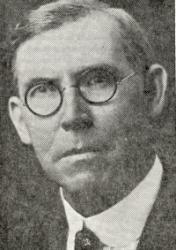
1876 - 1952 Arranger of "[What wondrous love is this, O my soul]" in Songs of Pentecostal Power, Complete Robert Emmett Winsett (January 15, 1876 — June 26, 1952 (aged 76) was an American composer and publisher of Gospel music.
Winsett was born in Bledsoe County, Tennessee, and graduated from the Bowman Normal School of Music in 1899.
He founded his own publishing company in 1903, and his first publication, Winsett's Favorite Songs, quickly became popular among the Baptist and Pentecostal churches of the American South. Pentecostal Power followed in 1907; that year Winsett completed postgraduate work at a conservatory.
He married Birdie Harris in 1908, and had three sons and two daughters with her. He settled in Fort Smith, Arkansas, continuing to compose gospel songs, of which he would write over 1,000 in total. He became a minister in 1923, and was affiliated with the Church of God (Seventh Day).
Birdie Harris died late in the 1920s, and shortly thereafter Winsett moved back to Tennessee. He founded a new company in Chattanooga, and published more shape note music books. He remarried, to Mary Ruth Edmonton, in 1930, and had three further children.
Winsett's final publication, Best of All (1951), sold over 1 million copies, and in total his books sold over ten million copies. His song "Jesus Is Coming Soon" won a Dove Award for Gospel Song of the Year at the 1969 awards. He has been inducted into the Southern Gospel Museum and Hall of Fame.
--www.wikipedia.org
R. E. Winsett
William Jensen Reynolds
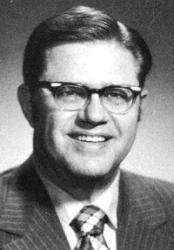
1920 - 2009 Person Name: William J. Reynolds Arranger of "WONDROUS LOVE" in Baptist Hymnal 1991
Pseudonyms include:
Bigelow, James
Buie, Dean
Clark, John
Day, Francis
Dorff, Gregory
Dorsey, Jane
Drakestone, John
East, Richard
Eastis, Ellen
Frye, Dan
Gregory, Peter
Harrold, Stan
Hawk, John
Horn, Ellen
Ingham, Marie
Jordaan, Jacques
Keely, Grant
Kije, Cyd
Kringel, Cark
Kuliami, Tiki [?]
Lee, Wilbur
Long, Richard
Long, Robert
MacDougall, Thom
Madsen, Carl O.
Monroe, Lou
Munroe, June
Reed, Ruth
Rodgers, Lee
Rosemont, David
Ross, Don
Saul, J. Crawford
Sneed, Roger
Wheeler, Annette
Winston, Clyde
York, Henry
--Email from William Colson to Mary Louise VanDyke, 4 May 2005, DNAH Archives. Names taken from the program of Reynolds' retirement dinner. Colson notes, "The program has faded and the one designated with a question mark is not 100% certain."
William Jensen Reynolds
Emily R. Brink

b. 1940 Harmonizer of "WONDROUS LOVE" in Renew! Songs and Hymns for Blended Worship Emily R. Brink is a Senior Research Fellow of the Calvin Institute of Christian Worship and Adjunct Professor of Church Music and Worship at Calvin Theological Seminary, Grand Rapids, Michigan. Her main areas of responsibility are conference planning and global resources. She is program manager of the annual Calvin Symposium on Worship, which draws more than 70 presenters and 1600 participants from around the world. She also travels widely to lecture and to learn about worship in different parts of the world, especially in Asia, where she has lectured in Bangladesh, China, Hong Kong, India, Indonesia, Japan, Nepal, Pakistan, Philippines, Singapore, and Taiwan.
Her areas of interest include congregational song from all times and places; psalmody; hymnal editing. She was editor of four hymnals and consults with a wide range of churches on worship renewal issues. Dr. Brink is active in the American Guild of Organists, serving in both local and national offices, as well as in the Hymn Society in the United States and Canada (president from 1990 1992) and named a Fellow of the Hymn Society in 2004 in recognition of distinguished services to hymnody and hymnology.
--internal.calvinseminary.edu/
Emily R. Brink
Ronald F. Krisman
Person Name: Ronald F. Krisman, b. 1946 Translator (sts. 1, 3, 4) of "What Wondrous Love Is This (Cuán admirable amor)" in Santo, Santo, Santo
Ronald F. Krisman
Haldor Lillenas

1885 - 1959 Person Name: H.L. Harmonizer of "WHAT WONDROUS LOVE" in Les Chants du Pèlerin Rv Haldor Lillenas DMus Norway/USA 1885-1959. Born at Stord, near Bergen, Norway, his father sold their 15 acre farm in Norway and emigrated to the U.S., buying a farm in Colton, SD. After he built a sod house, the family (wife and three chldren) also came to SD in 1887. They moved to Astoria, Oregon in 1889, where Lillenas learned English and began writing song lyrics at an early age. In 1900 the family moved again to Roseville, MN, where he worked as a farm laborer and began attending a Lutheran high school at Hawick, MN. He sold a few songs at age 19. At age 21 he began writing more songs, encouraged by some earlier ones becoming popular (“He set me free” was one). His mother died in 1906 and his father returned to ND, but Lillenas decided to move back to Astoria, OR, to finish a chemical correspondence course he had been taking. There he found employment in a chemical factory. He started attending a Lutheran church, but one evening he heard the song, “Tell mother I’ll be there”, sung at a mission. It made him decide to commit his life to Christ. An elderly lady who worked there told him about Jesus, and he began attending the Peniel Mission, a holiness rescue mission in Astoria, OR. He started working at the mission himself. In 1907 he moved to Portland, OR, where he worked with the Peniel Mission there, the mission paying most of his expenses. He was appointed leader of the mission. He saw many there come to know Christ and felt called to the Lord’s work. He joined the First Church of the Nazarene in Portland. Soon he enrolled in a ministerial course of study by correspondence. Soon afterward, he joined a vocal group associated with the Salvation Army called the ‘Charioteers Brigade’, which held street meetings and revival services throught much of CA. As a result of generous donations made, and efforts by his pastor, A O Hendricks, he was able to attend Pacific Bible College (later renamed Pasadena College), Los Angeles, CA. He also found part-time work to help support himself. He was soon a music director at a local church, and was preaching and writing songs. He also studied voice at the Lyric School of Music in Los Angeles, CA. While at Deets, he met and married Bertha Mae Wilson, also on an evangelistic team. Both preached. She was a songwriter like he. They practiced music at her father’s house and found that their voices blended well. They had two children: Evangline, and Wendell. They eventually became elders in the Nazarene Church, and she eventually became an ordained minister as well. He also studied music at the Siegel-Myers School of Music Chicago, IL. He composed songs for cantatas, Christmas, Easter, and special day services. He also used several pseudonyms in their composition. He traveled as an evangelist, then he pastored several churches (1910-1924) at Lompoc, CA, then Redlands, CA, and later in Indianapolis, IN. While there, In 1924, he founded the Lillenas Music Company (bought by the Nazarene Publishing Company in 1930). His wife preached at their pastorate until he was able to get the company up and running. While they owned the company, they published more than 700,000 hymnals. He worked as an editor there (after selling his company) until his retirement in 1950, becoming an advisor for them until his death. Also that year Lillenas purchased a 500 acre rural estate in Miller County, MO, where they built an Ozark home called ‘Melody Lane’. Lillenas joined the American Society of Composers, Authors, and Publishers (ASCAP) in 1938. In 1941 he received an honorable doctorate degree from Olivet Nazarene College, Bourbonnais, IL. In 1945 Bertha died of cancer, and later that year Lillenas remarried to a Lola Dell, and they lived in Melody Lane until 1955, when they moved to Pasadena, CA, attending the Nazarene Church there. They also made three trips to Norway after his retirement, and he wrote three books during that time: “Modern gospel song stories (1952), “Down Melody Lane (an autobiography): (1953), “Motoring 11,000 miles through Norway-A guide for tourists” (1955). In 1955 they toured Israel and sponsored a Palestinian Greek Orthodox family he had met as immigrants to the US that included Sirhan Bishara Sirhan (born in 1944). After they arrived in Pasadena, the Sirhan family stayed with Lillenas for several months, after which the Sirhans moved to a home Lillenas rented and furnished to them. When Mary Sirhan’s husband abandoned her and her two sons and returned to Jordan, Lillenas ensured that they were able to remain in the US. S B Sirhan was the convicted killer of Robert Kennedy. Lillenas wrote some 4000 hymn lyrics, supplying some for evangelists. Four of his song books contain his hymns: “Special sacred songs” (1919), “New Sacred Songs”, “Strains of love”, and “Special sacred songs #2”. He died at Aspen, CO. He is buried at Kansas City, MO. He was an author, editor, compiler, composer, and contributor. He edited and compiled over 50 song books.
John Perry
Haldor Lillenas
Geoff Weaver
b. 1943 Arranger of "[What wondrous love is this, O my soul, O my soul]" in In Every Corner Sing
Geoff Weaver
Randall Keith DeBruyn
b. 1947 Person Name: Randall DeBruyn, b. 1947 Arranger of "WONDROUS LOVE" in Glory and Praise (3rd. ed.)
Randall Keith DeBruyn
Annabel Morris Buchanan
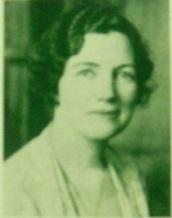
1888 - 1983 Arranger of "WONDROUS LOVE" in Folk Hymns of America Born: October 22, 1888, Groesbeck, Texas. Died: January 6, 1983, Paducah, Kentucky. Buried: Round Hill Cemetery, Marion, Virginia.
Daughter of William Caruthers Morris and Anna Virginia Foster, and wife of John Preston Buchanan, Anna received her musical training at the Landon Conservatory of Music, Dallas, Texas (to which she received a scholarship at age 15); the Guilmant Organ School, New York; and studying with Emil Liebling, William Carl, and Cornelius Rybner, among others. She taught music in Texas; at Halsell College, Oklahoma (1907-08); and at Stonewall Jackson College, Abingdon, Virginia (1909-12). In 1912, she married John Preston Buchanan, a lawyer, writer, and senator, from Marion, Virginia; they moved to their home, Roseacre, in Marion, where they had four children.
Buchanan served as president of the Virginia Federation of Music Clubs in 1927, and helped organize the first Virginia State Choral Festival in 1928, and White Top Folk Festivals (1931-41). After her husband’s death in 1937, she sold Roseacre and moved to Richmond, Virginia, with her two youngest children. She taught music theory and composition and folk music at the University of Richmond (1939-40); during the summers, at the New England Music Camp, Lake Messalonskee, Oakland, Maine (1938-40); and at the Huckleberry Mountain Artists Colony near Hendersonville, North Carolina, in 1941. She later moved to Harrisonburg, Virginia, and taught at Madison College (1944-48). In 1951, she moved to Paducah, Kentucky. She later became the archivist of the folk music collecting project of the National Federation of Music Clubs, serving until 1963. Buchanan’s works include:
Folk-Hymns of America (New York: J. Fischer, 1938)
American Folk Music, 1939
Sources:
Findagrave, accessed 15 Nov 2016
Hughes, pp. 329-30
Hustad, p. 213
© The Cyber Hymnal™. Used by permission. (www.hymntime.com
Annabel Morris Buchanan
Elizabeth Poston
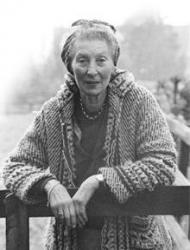
1905 - 1987 Person Name: E. P. Arranger of "WONDROUS LOVE" in The Cambridge Hymnal Elizabeth Poston (24 October 1905 – 18 March 1987) was an English composer, pianist, and writer.
See more in:
Wikipedia
Elizabeth Poston
Jack Boyd
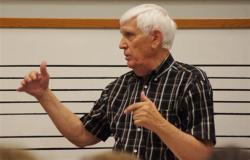
b. 1932 Arranger of "WONDROUS LOVE" in Great Songs of the Church (Revised) Jack Arthur Boyd (b. Indianapolis, Indiana, February 9, 1932) was the music editor of *Great Songs of the Church, Revised*, published by ACU Press in 1986. He earned a B.S. degree in music education from Abilene Christian University, a masters degree in music composition and theory from the University of North Texas, and a Ph.D. in choral literature from the University of Iowa. Boyd edited *Children, Rejoice!* (Sweet, 1979) and he authored *Rehearsal Guide for the Choral Director* (Parker, 1970) and *Leading the Lord's Singing* (Quality, 1981). He is a member of Churches of Christ and lives in Abilene, Texas.
Monty Lynn
Jack Boyd
Donald Busarow
1934 - 2011 Person Name: Donald A. Busarow, b. 1934 Arranger of "WONDROUS LOVE" in Lutheran Service Book Donald Arthur Busarow, was born April 10, 1934 in Racine, WI. He received a Bachelor's degree from Concordia University, River Forest, IL, a Master's degree from the Cleveland Institute of Music and a Ph.D. from Michigan State University. He served churches in Detroit, Cleveland and Milwaukee. He was a professor at Concordia College - Milwaukee, WI, before coming to Wittenberg University in 1975. At Wittenberg, he served as professor of music, teaching courses in music theory, composition, church music and organ. He served as University organist and directed the Wittenberg Choir for 28 years. He traveled the country giving organ recitals, hymn festivals, and choral and organ workshops. Don was a member of St. Matthew Evangelical Lutheran Church in Huber Heights, OH, and served as organist and choir director there for 24 years. He was also the organist at the First Presbyterian Church of South Charleston, OH, for the past 10 years. During his career, Don received many honors for his compositions. His published works are included in the catalogs of seven publishing houses. He was involved in organ consultation and design in many cities including Detroit, Chicago, and most recently in Columbus, where he designed the organ at Trinity Lutheran Seminary. In 1996, Don received an honorary Doctor of Letters from his alma mater, Concordia University, IL, for his achievements in music composition and choral conducting.
From his obituary published in Dayton Daily News on Nov. 2, 2011
Donald Busarow
Claude Rozier
Translator (into French) of "What Wondrous Love Is This" in Voices United
Claude Rozier
Richard L. VanOss
b. 1953 Person Name: Richard L. Van Oss Harmonizer of "WONDROUS LOVE" in Songs for Life
Richard L. VanOss
María Eugenia Cornou
b. 1969 Person Name: María Eugenia Cornou, b. 1969 Translator (st. 2) of "What Wondrous Love Is This (Cuán admirable amor)" in Santo, Santo, Santo
María Eugenia Cornou
Paul J. Christiansen
Person Name: Paul J. Christiansen, 1914- Harmonizer of "WONDROUS LOVE" in Hymns for a Pilgrim People
Paul J. Christiansen
Alexander Means
1801 - 1883 Author (attributed to) of "Wondrous Love" in Seventh-day Adventist Hymnal
Alexander Means
James Christopher
1813 - 1844 Person Name: Christopher Composer of "WONDROUS LOVE" in The Southern Harmony, and Musical Companion (New ed. thoroughly rev. and much enl.) James Christopher (1813-1844) lived in Spartansburg, South Carolina. He contributed several tunes to William Walker's Southern Harmony, Edition 4 (1840).
--David Warren Steel and Richard H. Hulan. 2010. The Makers of the Sacred Harp.
James Christopher
Elfred Bloedel
1924 - 2020 Person Name: Elfred Bloedel, 1924-2020 Arranger of "WONDROUS LOVE" in Christian Worship
Elfred Bloedel
Louita Clothier
b. 1936 Person Name: Louita Clothier, 1936 - Harmonizer of "WONDROUS LOVE" in Hymns of the Saints
Louita Clothier
Connie Campbell Hart
b. 1929 Person Name: Connie Campbell Hart, 1929 Alterer of "What Wondrous Love" in Singing the Living Tradition
Connie Campbell Hart
Joan Larie Sutton
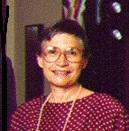
1930 - 2016 Translator of "Maravilhoso Amor" in Hinário para o Culto Cristão Joan Larie Sutton (nee Riffey) was born in Louisville, KY but lived most of her life in Brazil with her missionary parents. She began the study of violin at the age of ten, continuing her studies at Baylor University. She earned a Masters Degree in sacred music at Southern Baptist Theological Seminary in Louisville. She married William Boyd Sutton and together they worked in Brazil. She translated many hymns into Portuguese.
================
JOAN SUTTON LARIE (Married to Pastor John Boyd Sutton)
Brazilian Baptists owe much to this American musician who, after more than 30 years of fruitful work in Brazil (see: "Nassau", p.l66). was the catalyst for musical talent, natives and aliens in the preparation of "Hymns for Christian Worship," which contributed to the translations, which revealed hymns by contemporary authors.
http://www.abordo.com.br/nassau/galeria.htm
Joan Larie Sutton
F. Richard Garland
Author of "How Full is God's Great Love" in Discipleship Ministries Collection The Reverend F. Richard Garland is a retired United Methodist pastor. He and his wife, Catherine Sprigg, a Certified Registered Nurse Anesthetist, live in North Kingstown, RI.
Dick was born and raised in Fort Wayne, Indiana, and is a lifelong Methodist. A graduate of Garrett Theological Seminary, he interned in Chicago and then served churches in Indiana, Rhode Island, Massachusetts, and Connecticut. He continues to preach on occasion, provide coverage in emergency pastoral situations, and write a monthly essay, "From Where I Sit" for the newsletter of the North Kingstown UMC. He has been a contributor to The Upper Room.
Dick is a lifelong hiker who still climbs in the mountains of New Hampshire. At home, he spends a great deal of time in his flower gardens. He has sung with the Rhode Island Civic Chorale and Orchestra and is a member of the Fellowship of United Methodists in Music and Worship Arts.
Dick wrote his first hymn, a children's song, in a seminary music class with Austin C. Lovelace, and he has written poetry for many years. He began writing hymns for use in his churches about twenty years ago, but did not submit them for publication until 2006, after being encouraged to do so by a classmate and friend.
Many of his texts are inspired by the seasons of the church year, particularly Christmas and Easter, and by Scriptures from the Lectionary. In April of 2007, an appeal from a clergy colleague for a memorial hymn in response to the shootings at Virginia Tech University resulted in the creation of his hymn, In Grief and Aching Sorrow, set to the tune, Passion Chorale by J.S. Bach. Once, his pastor, frustrated in trying to find enough hymns to go with the Good Samaritan story in Luke 10:25-37, asked him to write a new hymn for a service. The result was his hymn, "When We Would Neighbor Be." On a dare from a colleague, he revealed a whimsical side by writing a hymn for Groundhog Day, "Praise the Lord for Woodland Creatures." His hymn, "I Have a Dream," was written to celebrate the 50th Anniversary of the address by The Rev. Dr. Martin Luther King, Jr. He has written a series of texts based on the selections from the Letters to the Ephesians and to the Philippians found in the New Revised Common Lectionary.
F. Richard Garland
F. Richard Garland
Simon Zachariah
b. 1951 Translator of "എത്രയോ അത്ഭുതം തന് സ്നേഹം ആത്മാവേ!" in The Cyber Hymnal
Simon Zachariah
Clair Weldon
1928 - 2007 Person Name: Clair E. Weldon, 1928- Translator of "¡Cuán Admirable Amor!" in Himnos de Vida y Luz
Clair Weldon
Lawrence A. Wik
Author of "What Praises Shall We Bring" in Discipleship Ministries Collection
Lawrence A. Wik


 My Starred Hymns
My Starred Hymns